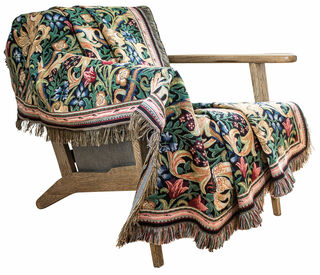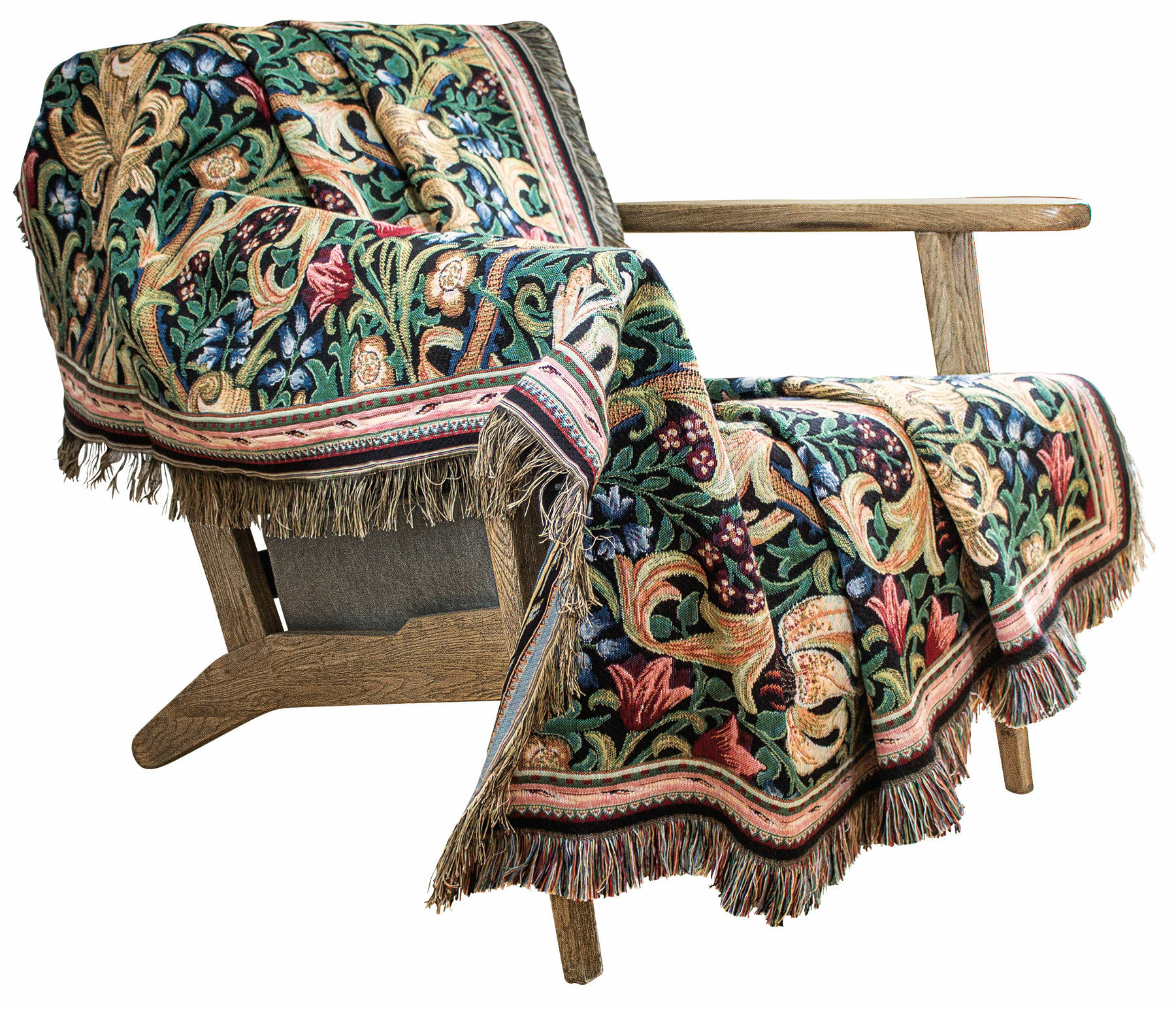Quick info
100% cotton | size 140 x 140 cm
Detailed description
Throw "Golden Lily" - after William Morris
A floral rug inspired by the founder of the Arts and Crafts movement, William Morris. With its enchantingly detailed floral pattern, the throw will enhance any classic interior. With fringe. Made of 100% cotton in a firm tapestry quality. Size 140 x 140 cm.
Customer reviews
Passt sehr gut auf unser Sofa, schön und praktisch.
Wunderschönes Plaid!! Tolle kräftige Farben und eine gute Qualität! Ich bin sehr zufrieden!
sehr schön und hochwertig...
Art Nouveau, or the German term Jugendstil (lit.: "Youth Style"), is the art epoch between 1890-1910. The name originates from the Munich-based magazine "Jugend" (Youth), founded in 1896. It was the German counterpart of Art Nouveau (France), but also internationally known as Modern Style (England) or Secession (Austria).
Art Nouveau conquered all of Europe and innumerable works were created, ranging from painting and applied arts to architecture. One of the requirements of Art Nouveau was the artistic design of everyday objects, i.e. beauty and practicality were combined. The desired unity of the artistic ability could only be achieved through individually influenced design, which made the Jugenstil the precursor of modernism. The essential characteristic of Art Nouveau is linear, often asymmetrical ornamentation. The models are particularly taken from nature and flora.
Major Art Nouveau centres were formed in Munich, Darmstadt, Brussels, Paris and Nancy (Glass Art by Emile Gallé). The Viennese architecture of that time was determined by Otto Wagner and J. Hoffmann. Gustav Klimt created paintings that gave sensual shape to the spirit of Art Nouveau.


